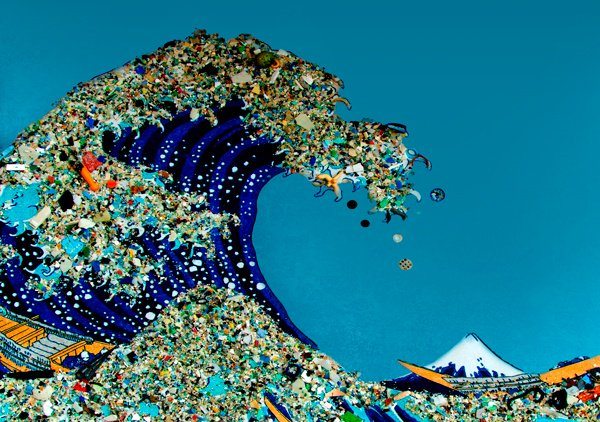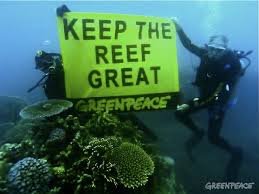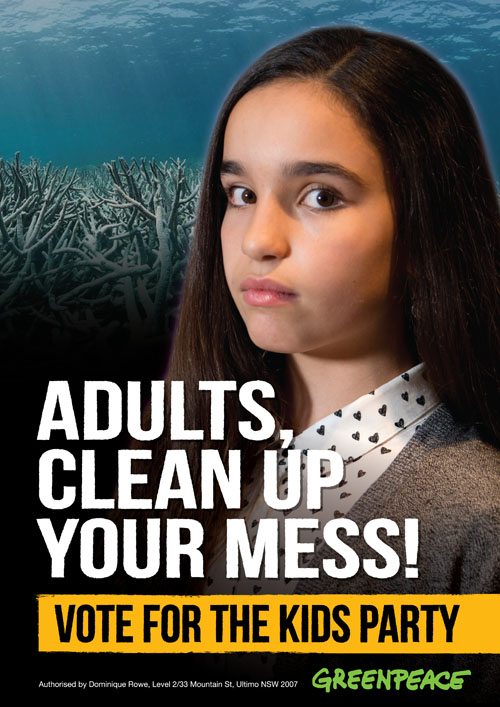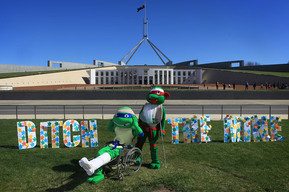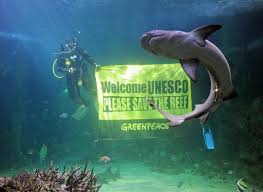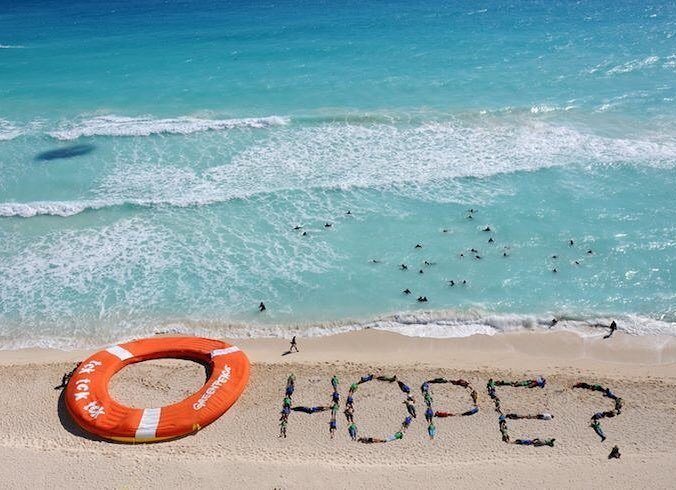In response to the urgent problem of climate change and Australia’s worsening environmental indicators, the Australian Greens and the Australian Labor Party delivered best ever policy platforms for the 2016 Federal Election.
In response to the urgent problem of climate change and Australia’s worsening environmental indicators, the Australian Greens and the Australian Labor Party delivered best ever policy platforms for the 2016 Federal Election. These policies may not deliver utopia but, because they are the best policy platforms ever, we know that the Australian Greens and the Australian Labor Party have been diligently striving for change since the last federal election in 2013.
The Liberal-National Coalition took a different approach. The Liberal-National Coalition is not offering its best policy platform ever. The Prime Minister Malcolm Turnbull is standing far behind that infamous environmental radical John Howard. Turnbull’s government actually attacked Howard’s environmental laws. Even John Howard supported an emissions trading scheme and he never sought to silence nature groups just when nature needed them the most.
Despite Malcolm Turnbull’s talk of “transition” there is no substantive difference between Turnbull and the Prime Minister he replaced, Tony Abbott. The Government has no plan for transition. The Government’s plan was to “reboot” mining. As commodity prices continue to fall the Government remain content to dig up all the coal anyway and in anticipation of the extinction of our wildlife, bleaching of the Reef and destruction of ancient forests, the Government set about gutting our nature laws and silencing nature groups.
I discussed the Liberal-National policies to deal with climate change in my previous post, so in this one I will compare its policies to those of the Australian Greens and the Australian Labor Party.
The Guardian provides a detailed explanation of the differences between the parties specific to the Great Barrier Reef. I will discuss some of the differences on the Reef but more generally climate change and how the different political parties propose to protect our land and water.
To put environmental policy in some context I want to mention that it isn’t too complicated, I mean kids could do it… and they did.
The Greenpeace, Kids Party was launched this federal election as a way to expose our political systems failure to represent the future of the Reef and the voters who will inherit this legacy.
The Greenpeace Kids Party policy is simple and would save the Reef. The Greenpeace Kids Party policy platform can be summed up in three bullet points.
Protect the Great Barrier Reef
Stop coal polluting our world
More solar and wind energy
The kids who developed these policies may not have any economic modelling behind them and the policies may not be explained as technically as an official political party, but as we shall see, these are the policies of the following political parties, to greater or lesser extents. I will compare carbon pollution reductions targets and renewable energy targets at the end.
The Liberal National Coalition is yet to release some of its climate policies – such as what target, if any, it will set for renewable energy after 2020.
I discussed the policy of Direct Action in my last post.
The Green Army is a flagship environmental policy of the Liberal-National Coalition Government. The Green Army is recruited from the ranks of the long term unemployed who clean up litter or plant trees as part of their Newstart agreement. There is no evidence the Green Army or any work for the dole scheme leads to better employment outcomes and as an environmental policy it is deeply flawed. Instead of cleaning up litter, Greenpeace advocates prevention using Container Deposit Schemes or Bans on plastic bags.
(Although we do advocate cleaning up the litter too! There are more than 34.9 billion pieces of visible plastic in Australian waters.)
Cash for Containers, for example, is a state-based container deposit scheme implemented to prevent litter on our beaches. I might clean up container deposits from a beach one summer. The next summer I return to the beach only to find new deposits. So I spend that summer cleaning the beach too. After several summers I decide my efforts are not really worthwhile as every summer the beach is polluted so instead I decide to advocate for different laws and practices in order to not only prevent the pollution but stop it altogether.
The Liberal-National Coalition has made two attempts to reduce legal protections for communities’ land and water since they came to government. The Government made two attempts to legislate changes to the Environment Protection and Biodiversity Act (1999) (EPBC) since being elected in 2013; a Bilats amendment and an amendment to the Standing Provisions. The – Bilats Bill – amends the act so the Environment Minister can pass authority for environmental approvals to the states, including the ‘Water Trigger’ amendments to avoid duplication of approvals (ie a one stop shop). Labor, the Greens and cross benches opposed the Bill. The Bilats Bill failed to pass the Senate in September 2015.
The second change the Government attempted was in response to the Environment Department’s own failure to follow approvals processes. The Environment Protection and Biodiversity Conservation Amendment (Standing) Bill 2015 – Standing Provisions – (Section 487) – removes the standing – or the right to object – of stakeholders to seek judicial review of environmental approvals by the Government. On August 5th 2015 the Commonwealth agreed to consent orders issued by the Federal Court to set aside the Environment Minister’s decision to approve Adani’s Carmichael Coal mine in Queensland. Subsequently the Minister for the Environment Greg Hunt and the Government blamed the departmental error on ‘lawfare’ and ‘environmental vigilantism’ through the courts and sought to make changes to the standing provisions of the EPBC. The Government did not attempt to bring these changes to the Senate where it knew they would be blocked.
Despite widespread public opposition the Government is still intent on weakening the laws that protect communities’ land and water. A Lonergan Research Poll revealed that 57 percent of those polled did not support proposed changes to the EPBC and only 22% did. Greenpeace Australia Pacific collected more than 35 000 signatures for a petition opposing the Government’s changes.
The Governments’ intention is clear from the Senate Environment and Communications References Committee’s Report on the Management of the Great Barrier Reef, tabled on Monday April 18, 2016. The revealing bit is the Coalition dissent from the Committee’s Report where the Committee rejects the Government’s EPBC Bilats – One Stop Shop Bill – Recommendation 26:
“1.53 Coalition Senators reject the committee’s recommendation that the Environment Protection and Biodiversity Conservation Amendment (Bilateral Agreement Implementation) Bill 2014 not be passed.” (Senate Environment and Communications References Committee’s Report on the Management of the Great Barrier Reef: P204)
So it is clear from this point the Coalition intends to pursue changes to the EPBC if the election provides a favourable senate.
Labor has promised to almost double the Coalition’s goal of cutting 2005-level emissions by 45 per cent by 2030. It would introduce two emissions trading systems to cut overall carbon emissions and also drive out the dirtiest coal-fired power plants. The leader of the Labor Party, Bill Shorten, said a future Labor Government would not place a moratorium on new coal mines but Labor, like the Greens committed to the Places You Love Alliance Environmental Laws in addition to restoring funding for Environmental Defenders Offices and the CSIRO. If elected, Labor said it would create a “climate trigger” in Commonwealth environmental legislation to allow Federal Government intervention to “ensure proper and rigorous investigation of broad-scale land clearing impact on Australia’s ability to meet its agreed climate change commitment to keeping global warming well below two degrees Celsius.”
While the Labor Party have offered greater protections for communities’ land and water the ‘Water Trigger’ will not necessarily stop projects that may damage people’s land and water from going ahead.
The Labor Party will not place a moratorium on Coal Seam Gas (CSG) or shale gas but they will extend the provisions of the ‘Water Trigger’ to shale gas. The ‘Water Trigger’ received some attention this election as the Independent Candidate for New England Tony Windsor, amongst others, suggests it is a way for communities to protect their land and water from CSG or large scale mining projects. The role of the ‘Water Trigger’ is disputed and Deputy Prime Minister and Windsor’s rival for the seat of New England, Barnaby Joyce, insisted the Australian Constitution prevented Commonwealth Governments from protecting citizens’ land and water.
The Australian Greens would seek to go further than Labor, including setting a 90 per cent renewable energy target for 2030, compared with Labor’s 50 per cent. The Greens would block new coal mines and coal seam gas fields, as well as taxing coal exports, under a policy that would channel funds into restoring health to the Great Barrier Reef.
The plan includes placing a $3-a-tonne level tax on all exports of thermal coal used to generate electricity to raise $700 million a year. The Greens would also put a carbon price on coal and gas exporters – including for fugitive emissions that leak from operations – that would reflect the “full cost” to the environment. With the “billions” raised from the taxes, and an end to miners’ subsidies that give them tax-free fuel, the Greens would increase funding for the Great Barrier Reef Marine Park Authority and the Australian Institute for Marine Science. The party would also boost support for water quality to cut pollution reaching the Reef.
The money raised from the taxes would also contribute to a $1 billion fund to help workers exit the fossil fuel industry as the ban on new coal and coal seam gas projects kicks in. Mines supplying coal used in steel making would not be covered by the ban on new ventures.
Carbon Pollution Reductions Targets
The Liberal-National Coalition
- Greenhouse gas reduction target of 26% to 28% by 2030 on 2005 levels
Labor
- Greenhouse gas reduction target of 45% by 2030 on 2005 levels and zero net emissions by 2050
The Australian Greens
- Zero net emissions by 2050
Greenpeace
- 40-60 per cent reduction by 2025 from 2000 levels
- 60-80 percent reduction by 2030 from 2000 levels
- Zero net emissions by 2040
Renewable Energy Targets
The Liberal-National Coalition
- 23 percent of electricity to come from renewables by 2020
Labor
- 50 percent renewable target by 2030
The Australian Greens
- 90 percent renewable target by 2030
Greenpeace Energy Revolution
- 100% of Australia’s energy to come from renewables by 2050, with an interim target of 50% by 2030
- 100% of Australia’s electricity to come from renewables by 2035
- The retention of the Australian Renewable Energy Agency (ARENA) and the Clean Energy Finance Corporation (CEFC) with a guarantee of long term funding above current levels

